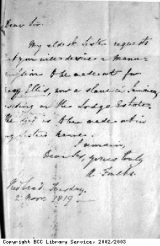Liberation: the beginning of the end
In 1807 the slave trade was ended in the British colonies. The new law affected the Caribbean islands owned by the British, that is, Jamaica, Barbados, Trinidad, St. Kitts, Nevis and several smaller islands. The law meant that the buying and selling of slaves from Africa was no longer allowed. However, slavery itself was not ended, so slaves on the plantations remained as slaves. Campaigners who had fought for the end of slavery now wanted to free, or ‘emancipate’, the people who were still slaves. Slavery had existed for about 200 years in British plantation colonies such as Jamaica in the Caribbean. Slave owners fought against the freeing of their slaves. Campaigners finally achieved their aim with the Emancipation Act in 1833. This was supposed to free the remaining slaves. But, it did not automatically give the slaves their freedom. This was because the British felt that the slaves were not used to this kind of independence. They thought that the slaves did not have enough skills, such as working for themselves, managing a wage and a household budget, which they would need to live as free people. The system introduced to train the slaves in freedom was called Apprenticeship. It was seen by many as another form of slavery. The slaves had to work for a low wage for their old masters as apprentices. True freedom came in 1838, when the apprenticeship system was abolished.
Several medallions were issued in 1834 to celebrate the end of slavery. The one shown here shows a slave family bathed in sunlight, with the man breaking his chains. The inscription on the back reads in part ‘to loose the bands of wickedness … and to let the oppressed go free’.




